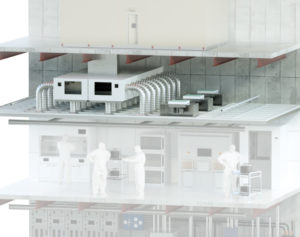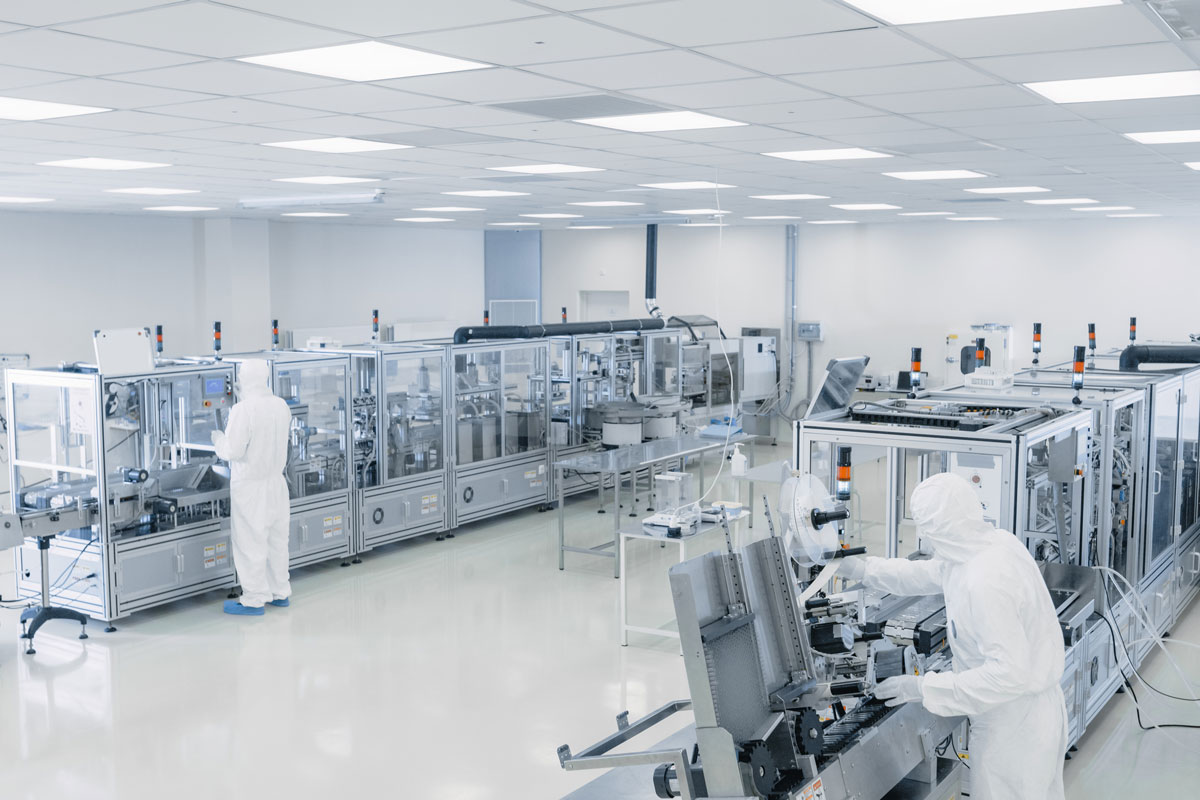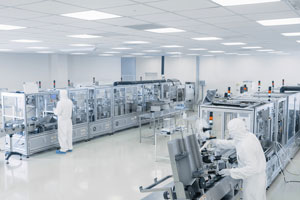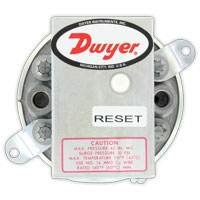A semiconductor transistor is a part with specific electronic properties that allow it to serve as a component in microchips and modern electronics like phones, laptops, and more. As these components are small and require precise manufacturing methods, there are facilities dedicated to their manufacture.
These facilities consist of several levels including air handlers and scrubbers for exhaust, HEPA room, fab cleanroom, and subfab areas. The control of differential pressure within the facility is essential for the safety of both equipment and personnel.

The HEPA/ULPA rooms are found in the space above a semiconductor cleanroom. This area has filtration equipment that removes particulates from the outside environment. A HEPA (high efficiency particulate air) filter and/or an ULPA (ultra low particulate air) filter is used to trap small contaminants and prevent them from entering the fab cleanroom area. The fab cleanroom has to be free of particulates, as it is where semiconductor devices such as microscopic transistors are manufactured. Something as small as a molecule from a fragrance can destroy one of these transistors, making proper filtration an essential part of the semiconductor fabrication process. Continue reading “Monitoring Solutions for Semiconductor HEPA/ULPA Rooms”



 The Dwyer team recently released the
The Dwyer team recently released the 

